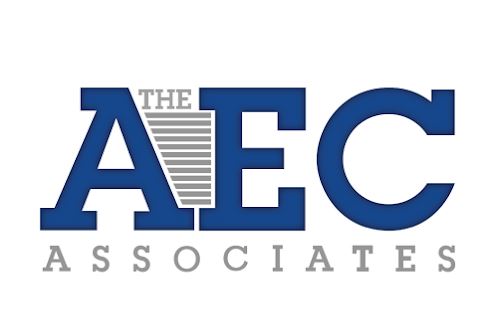In the dynamic and ever-evolving AEC (Architecture, Engineering, and Construction) industry, precise and accurate documentation is crucial for the success of any project. CAD (Computer-Aided Design) Drawing and Drafting Services have revolutionized how architects and designers approach project documentation, significantly impacting project outcomes. This blog delves into the transformative power of Architectural CAD Drawing and Drafting Services and how they maximize project success across various sectors.
Key Features of CAD Drawing and Drafting Services
Detailed Documentation
One of the primary benefits of CAD Drawing and Drafting Services is the creation of comprehensive construction documents. These documents include detailed floor plans, elevations, sections, and other necessary drawings that provide a clear and precise representation of the project. Accurate documentation is essential for guiding the construction process and ensuring that the design is executed as intended.
Customization and Flexibility
CAD Drawing and Drafting Services offer high levels of customization, allowing designs to be tailored to meet specific project requirements. Architects can adapt drafts based on client feedback and revisions, ensuring that the final design aligns perfectly with the client's vision. This flexibility is crucial for accommodating changes and improvements throughout the project lifecycle.
3D Modeling and Visualization
Modern CAD tools come equipped with 3D modeling capabilities that enhance design visualization. These tools allow for the creation of realistic 3D models, facilitating virtual walkthroughs and simulations. Enhanced visualization helps stakeholders understand the design better, making it easier to identify potential issues and make informed decisions.
Advantages for Different AEC Sectors
Residential Architecture
In residential architecture, CAD Drawing and Drafting provide detailed interior and exterior drawings that are crucial for custom home designs. Accurate visualizations help improve client satisfaction by providing a clear view of their future homes, ensuring that all design elements meet their needs and preferences.
Commercial Architecture
Commercial projects often involve complex layouts and space planning. CAD services ensure efficient space utilization and compliance with commercial building codes. Detailed CAD drawings help architects and designers address specific commercial requirements, such as accessibility, functionality, and aesthetic appeal.
Healthcare Architecture
Healthcare facilities have unique requirements that must comply with stringent standards and regulations. CAD Drawing and Drafting Services help create functional and compliant medical facilities by providing detailed and accurate documentation. These services ensure that all healthcare standards are met, enhancing the safety and efficiency of the facility.
Educational Architecture
In educational architecture, detailed CAD drawings are essential for creating effective learning environments. CAD services ensure that modern educational facility requirements, such as flexible learning spaces and accessibility features, are incorporated into the design. Accurate documentation helps create spaces that enhance the learning experience.
Implementation Strategies for CAD Drawing and Drafting
Initial Assessment
The implementation of CAD Drawing Services begins with an initial assessment of the project needs and documentation requirements. This evaluation helps define the scope of work and identify the specific services needed to achieve the project goals.
Design Development
During the design development phase, initial drafts are created and refined based on client feedback. This iterative process ensures that the design evolves to meet the client's vision and requirements. Detailed CAD drawings are developed, providing a clear representation of the project's scope and details.
Final Documentation
In the final phase, comprehensive construction documents are produced. These documents include all necessary drawings, specifications, and schedules required for the construction process. Clear and precise documentation is essential for guiding the project from concept to completion.
Collaboration and Feedback
Engaging with stakeholders for input and approval is a crucial part of the process. Regular collaboration and feedback ensure that the design aligns with the client's expectations and that any issues are addressed promptly. This collaborative approach enhances project outcomes and client satisfaction.
Overcoming Common Challenges
Handling Complex Designs
Managing intricate design elements can be challenging, but CAD tools offer techniques and features that simplify this process. Detailed layers, templates, and libraries help organize and execute complex designs efficiently, ensuring accuracy and clarity.
Ensuring Design Consistency
Implementing standardization in drafting practices is essential for maintaining consistency across all drawings. CAD software allows for the creation of templates and standards that ensure uniformity and accuracy in documentation.
Protecting Digital Assets
Data security is a critical concern in CAD Design and Drafting. Strategies for protecting digital drawings and intellectual property include using secure storage solutions, encryption, and access controls to safeguard sensitive information.
Technological Innovations in CAD Drawing and Drafting
Advancements in CAD Software
Emerging features and capabilities in CAD tools continue to enhance the design process. Innovations such as parametric modeling, generative design, and improved rendering engines are expanding the possibilities for architectural design, making it more efficient and precise.
Integration with VR/AR
The integration of CAD with Virtual Reality (VR) and Augmented Reality (AR) provides immersive design experiences. These technologies allow clients and stakeholders to interact with the design in new ways, offering deeper insights and better decision-making.
Sustainable Design Practices
Sustainability is becoming a priority in architectural design, and CAD tools are evolving to support this trend. Features that support eco-friendly practices, such as energy modeling and sustainable material selection, help architects create greener buildings.
Conclusion
Architectural CAD Drawing and Drafting Services are crucial for maximizing project outcomes in the AEC industry. These services provide detailed documentation, customization, and advanced visualization, enhancing project accuracy and efficiency. By adopting these services, AEC firms can ensure that their projects are executed with the highest levels of precision and client satisfaction. As technology continues to evolve, embracing CAD Drawing and Drafting Services will be essential for achieving innovative and successful architectural projects.





Comments